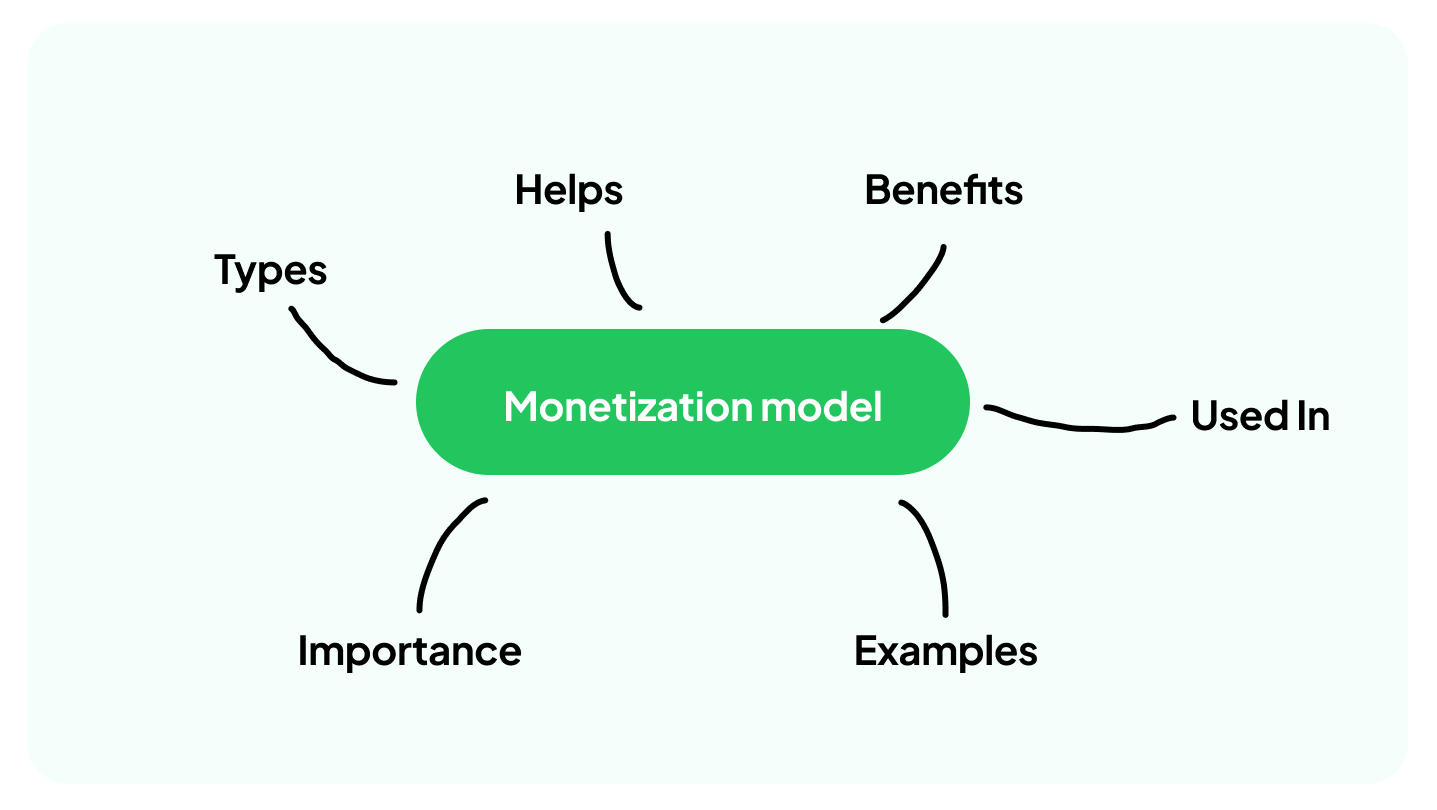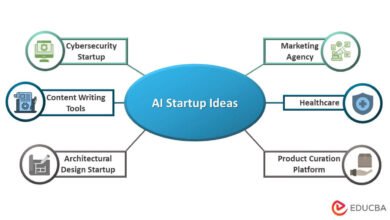How to Start an AI Company with Limited Resources
Learn how to launch profitable AI Company with limited resources. Discover bootstrapping strategies, no-code tools, MVP development, and funding.

The artificial intelligence startup landscape has undergone a dramatic transformation in 2025, democratizing entrepreneurship for founders without substantial capital. Once reserved for well-funded ventures backed by venture capital, launching an AI company with limited resources has become not just possible but increasingly common among ambitious entrepreneurs. Recent data shows that the percentage of startups launched by solo founders without venture capital has risen from 22.2% in 2015 to 38% in 2024, reflecting a seismic shift in how innovative businesses are built today. The convergence of free and affordable AI tools, no-code platforms, and cloud-based infrastructure means that what previously required million-dollar investments can now be accomplished with determination, strategic planning, and smart resource allocation. Whether you’re a solo founder, a small team, or someone transitioning from traditional employment, this comprehensive guide provides actionable strategies for starting an AI business without breaking the bank. By leveraging AI automation, bootstrapping techniques, and focusing on a specific market niche, you can turn your AI startup idea into reality. The barrier to entry has never been lower, and the opportunities have never been greater—making 2025 the perfect time to launch your venture into the thriving AI startup ecosystem.
1. Identify Your Niche Market and Validate Your AI Business Idea
Market Demand for AI Solutions
Before investing significant time or money, successful AI startup founders must identify problems that artificial intelligence can solve effectively. The most profitable AI companies don’t chase generic applications; instead, they focus on specific industries or customer segments where AI delivers measurable value. Research indicates that building a successful AI company requires creating products that solve problems at scale, not just niche solutions. Start by analyzing industries experiencing rapid digital transformation—healthcare, finance, e-commerce, customer service, and logistics remain prime opportunities for AI-powered solutions.
Conduct thorough market research to understand competitor landscapes, customer pain points, and revenue potential. Utilize free research tools like Google Trends, industry reports, and social media listening platforms to gauge demand. Ask yourself critical questions: Will customers pay for this AI solution? How large is the addressable market? What competitive advantages will differentiate your AI startup?
Validating Your Concept with Minimum Viable Research
With limited resources, you cannot afford to build first and ask questions later. Instead, implement lean validation methods by talking directly to potential customers. Survey at least 50-100 prospects through LinkedIn, industry forums, email outreach, and social media. Offer to conduct informal user interviews to understand their current workflows and specific challenges. Create simple landing pages describing your AI product idea and measure how many people express genuine interest through email sign-ups or demo requests.
This early feedback loop—part of what successful AI entrepreneurs call “problem validation”—requires minimal investment but provides invaluable insights. Many aspiring founders discover that their initial assumptions were wrong, saving them thousands of dollars in wasted development effort. Free platforms like Typeform, Google Forms, and Calendly enable sophisticated customer research without premium subscriptions.
2. Leverage Free and Low-Cost AI Tools for Development
Exploring No-Code and Low-Code Platforms
The traditional path of building AI applications from scratch using expensive infrastructure and specialized talent is no longer the only option. You can start an AI business by leveraging free AI tools, no-code platforms, and developing a Minimum Viable Product (MVP) to test your ideas. No-code platforms have democratized software development, enabling founders without deep technical backgrounds to create functional AI solutions.
Popular no-code options include Google’s AutoML, which requires no programming expertise to build machine learning models; Make.com, which connects applications through visual workflows; and Zapier, which automates business processes across hundreds of applications. These platforms allow you to focus on the business logic and customer experience rather than wrestling with complex infrastructure.
Utilizing Cloud-Based Infrastructure and APIs
Cloud-based setups like AWS, Google Cloud, or Azure offer flexible and scalable resources for AI companies, managing services for data storage, compute power, and AI-specific tools while saving you from large capital investments in physical infrastructure. These platforms operate on a pay-as-you-go model, meaning you only pay for resources you actually use—ideal for bootstrapping an AI startup.
Leverage pre-built APIs from established providers rather than building custom models from scratch. OpenAI’s GPT API, Google’s Gemini API, and Cohere’s language models provide powerful capabilities at fractional costs compared to training your own models. Many of these platforms offer generous free tiers for early development and testing, allowing you to build functional prototypes without spending a single dollar.
Free Tools for Content Creation and Operations
Beyond core AI development, numerous free tools can handle peripheral but essential business functions. ChatGPT, Gemini, and Claude offer free tiers for brainstorming, content creation, market analysis, and even basic coding assistance. Canva AI provides design capabilities for marketing materials and branding. Notion AI helps with documentation and workflow organization. These complementary tools, stacked together, create a powerful suite for AI startup operations that would normally cost thousands monthly in salaries and software subscriptions.
3. Build Your MVP with Realistic Budgeting

MVP Development Costs
Creating a functional Minimum Viable Product represents the critical bridge between idea and market validation. A custom MVP typically ranges from $35,000–$150,000 depending on complexity and compliance needs, though using AI-powered cost estimators and automation tools can reduce traditional development costs by 20–50%. For founders with truly limited resources, several strategies can dramatically reduce this figure further.
Implementing Phased Development Strategies
Rather than attempting to build a comprehensive solution simultaneously, segment your MVP development into phases. Launch with the absolute minimum feature set—ideally just 3-5 core functionalities that directly address the primary customer pain point. This approach, fundamental to lean startup methodology, reduces initial costs while accelerating market entry.
Consider building “AI wrappers”—user-friendly interfaces on top of existing large language models—which have proven particularly effective for solo founders and bootstrapped teams. These AI wrappers help founders reach $1 million annual revenues approximately four times faster than traditional development approaches while requiring minimal initial investment.
Prototyping Without Extensive Development
Before committing to full MVP development, create clickable prototypes using tools like Figma, Webflow, or no-code builders. These visual demonstrations allow you to test user assumptions, gather feedback, and validate demand without writing a single line of code. Share these prototypes with target customers and measure engagement—this approach costs virtually nothing yet provides insights worth thousands in validation.
4. Build a Lean Team or Embrace Solo Founder Advantages
Finding Technical Co-Founders and Early Talent
While hiring appears expensive, the right co-founder can amplify your capabilities enormously. You can find technical talent by hiring great AI professionals, working with experienced freelancers, or finding a technical co-founder to bring your AI vision to life. Attend AI conferences, university partnerships, and online communities like GitHub, Stack Overflow, and AI-specific Discord servers to connect with passionate developers.
Consider equity arrangements rather than cash salaries during the bootstrap phase. Many talented developers embrace the startup risk in exchange for meaningful ownership stakes. Be transparent about limited resources, but emphasize the opportunity and vision.
Leveraging Freelancers and Outsourced Teams
Platforms like Upwork, Toptal, and specialized AI talent networks allow you to hire experienced developers on a project basis, paying only for work completed. This flexibility prevents long-term salary commitments while maintaining quality. Start with smaller test projects to evaluate freelancer reliability before committing to larger development efforts.
Succeeding as a Solo Founder with AI Automation
The percentage of startups launched by solo founders without venture capital has risen from 22.2% in 2015 to 38% in 2024, as AI-powered tools enable one founder to accomplish what previously required entire early-stage teams. This trend reflects genuine capability expansion—modern founders can automate repetitive tasks, delegate routine business functions, and focus exclusively on strategic activities.
5. Implement Effective Bootstrapping Strategies
Starting with Revenue-Generating Activities
The most sustainable AI startups generate revenue from day one rather than waiting for funding. Begin by offering consulting services or custom AI solutions to early customers, establishing immediate cash flow. This revenue, reinvested strategically, funds product development while validating market demand simultaneously.
Growth Hacking and Cost-Effective Marketing
With limited marketing budgets, prioritize high-return channels: content marketing through blogs and LinkedIn, community engagement in relevant forums, strategic partnerships, and referral programs. Create valuable free content that addresses your target audience’s challenges—this builds authority, generates organic traffic, and attracts potential customers at minimal cost.
Leverage user-generated content and community building. Engage authentically in AI communities, contribute to open-source projects, and share learning openly. These activities build reputation and generate inbound interest organically.
Lean Operations and Automation
Automating repetitive admin tasks with AI tools like invoicing, payroll, and customer relationship management frees time to focus on areas requiring personal attention, allowing you to work smarter, not harder. Implement AI-powered scheduling, marketing automation, and customer service tools to minimize operational overhead.
6. Understand Realistic Funding Alternatives
Pre-Seed and Seed Funding Landscape for 2025
The AI funding environment in 2025 presents both opportunities and challenges. At the pre-seed stage, AI companies are consistently pulling in $500K to $2 million, far above the typical $250K to $1 million range for non-AI startups. However, securing this capital requires demonstrating clear product-market fit and measurable traction.
Exploring Non-Dilutive Funding Options
Non-dilutive capital sources—funding that doesn’t require giving up equity—deserve serious consideration. Revenue-based financing, grants, accelerator programs, and strategic partnerships provide capital without ownership dilution. Many government agencies and private organizations offer grants specifically for AI startups, particularly those addressing healthcare, climate, or enterprise challenges.
Seed-Strapping and Strategic Funding
An emerging approach called “seed-strapping” combines small initial funding rounds with disciplined bootstrapping, enabling sustainable growth without massive dilution. Seed-strapping, or raising one round of funding and scaling profitably from there, is gaining popularity amid evolving venture capital markets as AI helps founders become more efficient for less money, minimizing the need to raise venture capital. This balanced approach suits founders with limited initial resources perfectly.
7. Focus on Data Quality and AI Infrastructure
Establishing Proper Data Governance from Day One
Data forms the foundation of any successful AI business model. To adopt AI effectively, you must have sufficient high-quality data and implement proper data governance from the start, including robust documentation and a data-driven culture for ensuring transparency, accuracy, and reliability in AI models. Without high-quality training data, even sophisticated algorithms fail to deliver value.
Begin by assessing your data advantages—unique datasets, privileged access to information sources, or proprietary collection methods create defensible competitive advantages. Document your data sources, collection processes, and validation procedures meticulously.
Implementing Cost-Effective Data Infrastructure
Cloud platforms like AWS, Google Cloud, and Azure provide affordable data storage and processing services. Tools like MLflow and Databricks, mentioned earlier, help streamline data management and model tracking without expensive enterprise solutions. These platforms scale cost-effectively as your startup grows.
8. Develop Your Business Model and Monetization Strategy

Choosing Revenue Models Suited to Limited Resources
Successful AI companies employ diverse revenue models suited to their specific value propositions. Subscription-based SaaS models generate recurring revenue with predictable cash flow. Successful solo AI startups frequently combine subscription (SaaS) models for stable, recurring income with usage-based or hybrid pricing to accommodate different customer needs. API-based or pay-per-use models align costs with customer value, making them attractive to budget-conscious buyers.
Custom consulting and implementation services generate high-margin revenue while building deep customer relationships and product insights. Many successful AI startups combine multiple revenue streams—perhaps offering premium SaaS services alongside consulting for complex implementations.
Building Business Model Defensibility
Long-term defensibility is crucial in the competitive AI space, as competition can arise quickly. Competitive advantages might include exclusive data sources, proprietary algorithms, deep industry expertise, strong customer relationships, or network effects. Identify and strengthen your specific defensibility mechanisms early—they matter increasingly as your startup matures.
9. Build Your Team’s AI Expertise and Culture
Investing in Continuous Learning
Companies with strong innovation cultures are much more likely to succeed in digital transformations and are ahead of their peers in using technology to distance themselves from competitors. Allocated time for continuous upskilling is essential when staying ahead in the rapidly evolving AI landscape. Encourage your team to continuously develop AI knowledge through online courses, research papers, and industry conferences.
Free resources abound: Andrew Ng’s Machine Learning course on Coursera, Stanford’s CS229 lectures, and numerous YouTube channels teach AI fundamentals. Internal knowledge-sharing sessions and paper discussions create a learning culture without expensive training programs.
Creating an Environment for Innovation
Establish agile practices encouraging experimentation. Allocate dedicated time for team members to explore new AI techniques, test novel ideas, and pursue passion projects. This culture attracts talented people while generating unexpected innovations. Many breakthrough product features emerge from exploratory work rather than formal roadmaps.
10. Navigate Legal, Compliance, and Regulatory Considerations
AI Governance and Data Privacy
Even with limited resources, compliance cannot be an afterthought. Various jurisdictions regulate AI applications, particularly in healthcare, finance, and regulated industries. Data privacy regulations like GDPR and CCPA impose requirements regardless of company size.
Consult with legal professionals familiar with AI regulations—this investment typically ranges from $1,000-$3,000 for initial guidance and often prevents far costlier mistakes later. Many startup law firms offer reduced rates for early-stage ventures or equity arrangements.
Building Compliance Into Your MVP
Design compliance considerations into your product from the beginning rather than retrofitting later. This approach proves cheaper and less disruptive than discovering compliance issues after launch. Document your data handling practices, implement appropriate security measures, and maintain audit trails demonstrating responsible AI practices.
11. Scale Your AI Startup Strategically
Recognizing When to Pursue Funding
Growth eventually requires capital beyond what bootstrapping generates. Successful founders recognize the inflection point where investment accelerates growth beyond organic reach. Typical indicators include strong product-market fit evidenced by consistent customer acquisition, growing revenues, sustainable unit economics, and clear market expansion opportunities.
Maintaining Company Culture During Growth
As your AI startup scales, the culture that enabled bootstrap success can erode quickly. Intentionally preserve the values and practices that differentiated your company: agility, customer focus, innovation emphasis, and lean operations. Many bootstrapped founders credit a maintained culture with enabling successful scaling.
More Read: AI Startup Valuations Are They Realistic Right Now
Conclusion
Launching an AI company with limited resources demands strategic thinking, resourcefulness, and a willingness to do more with less. The democratization of artificial intelligence tools, no-code platforms, and cloud infrastructure has fundamentally changed startup economics, making 2025 genuinely different from previous eras. Success requires clearly identifying your niche market, validating customer demand before extensive development, leveraging available free and low-cost tools intelligently, building an MVP strategically, assembling complementary team members or embracing solo founder advantages, implementing disciplined bootstrapping, and maintaining focus on sustainable revenue generation.
By combining these elements—market validation, lean development, cost-effective operations, and strategic funding—entrepreneurs without substantial capital can build thriving AI businesses that deliver genuine value to customers. The real barrier to entry is no longer financial; it’s entrepreneurial determination, clear thinking, and persistent execution. Your AI startup journey begins with a single step: identifying a problem worth solving, validating that customers care about solving it, and committing to building the solution. The opportunity awaits—are you ready to seize it?











